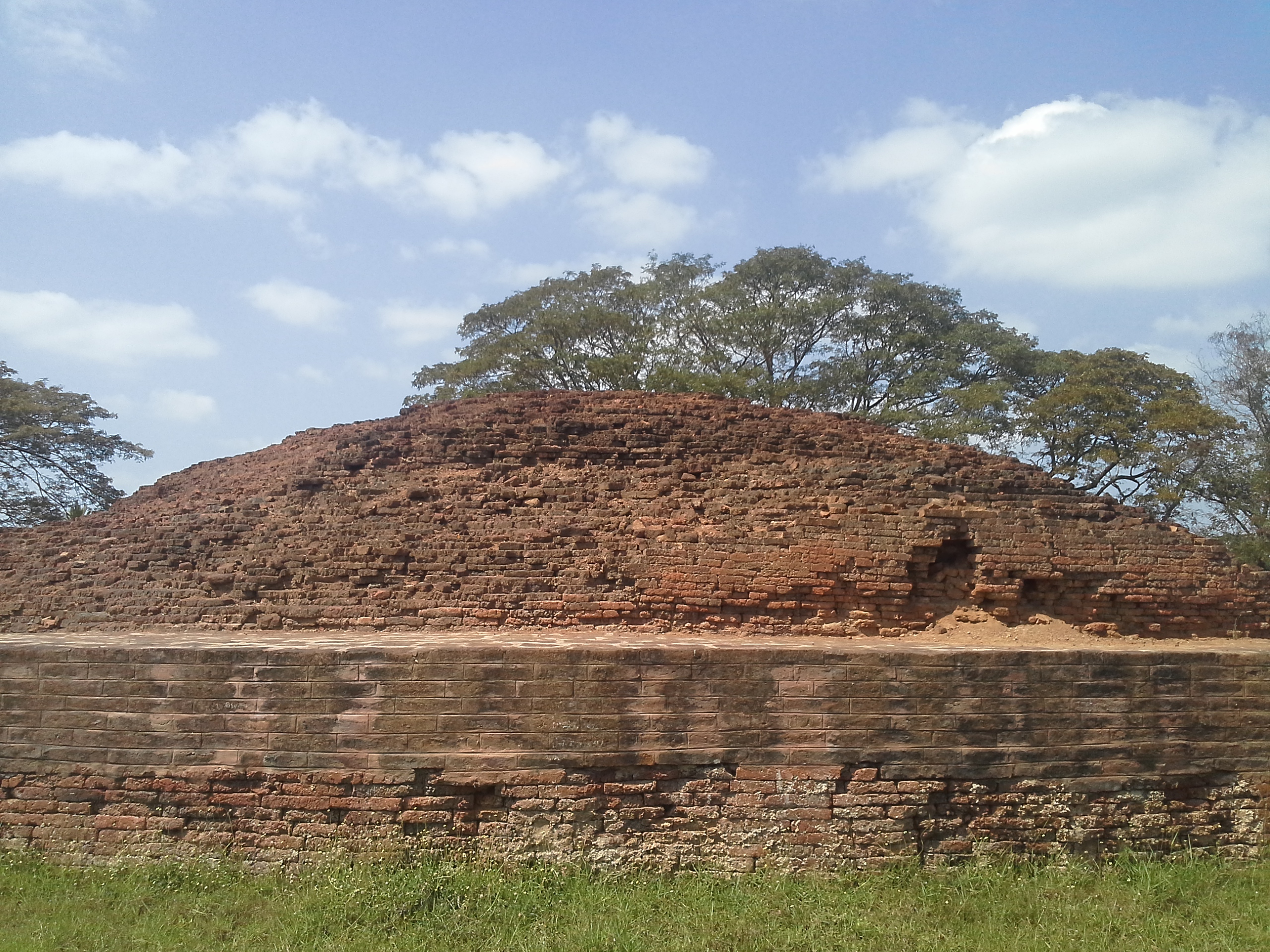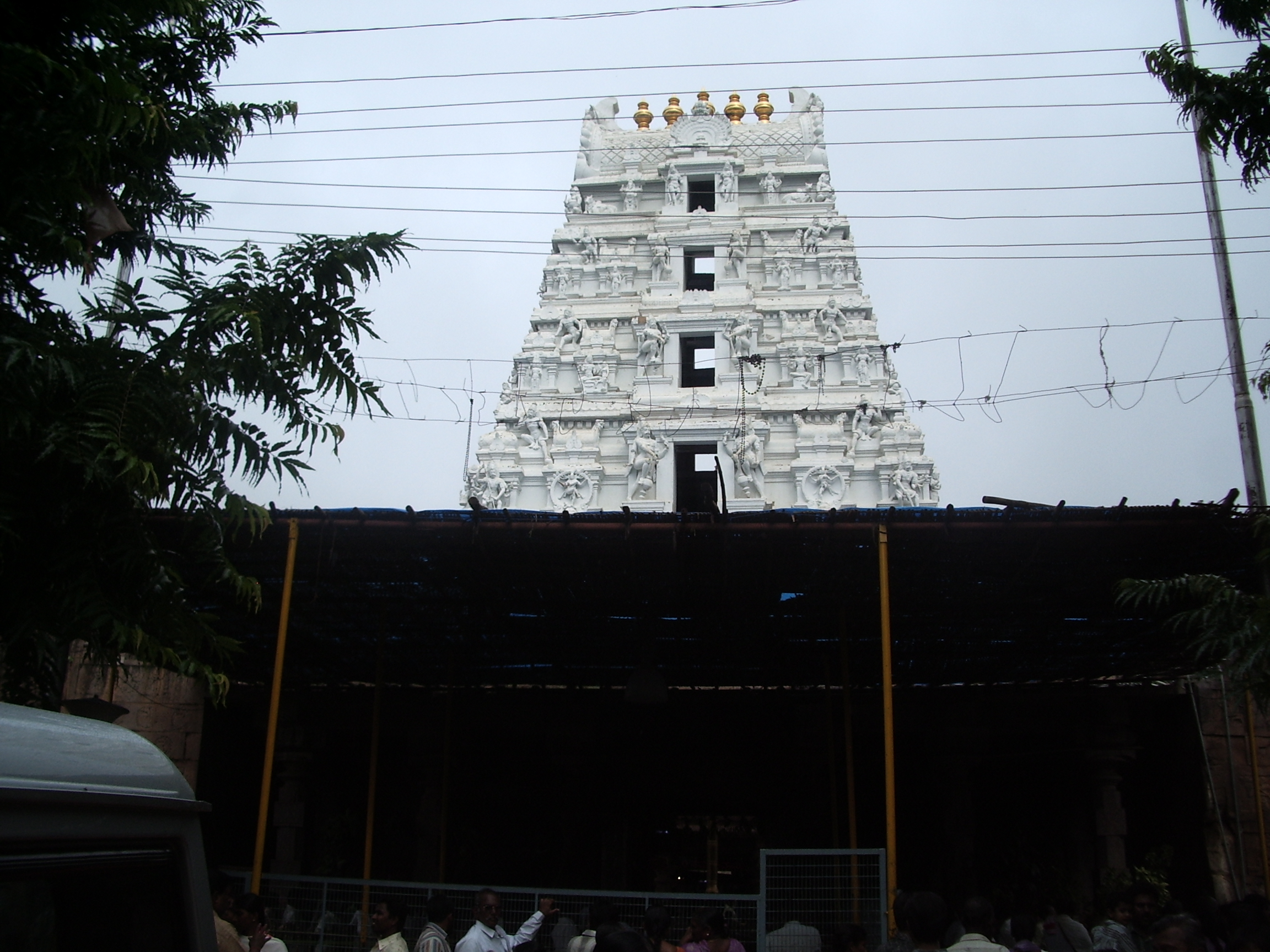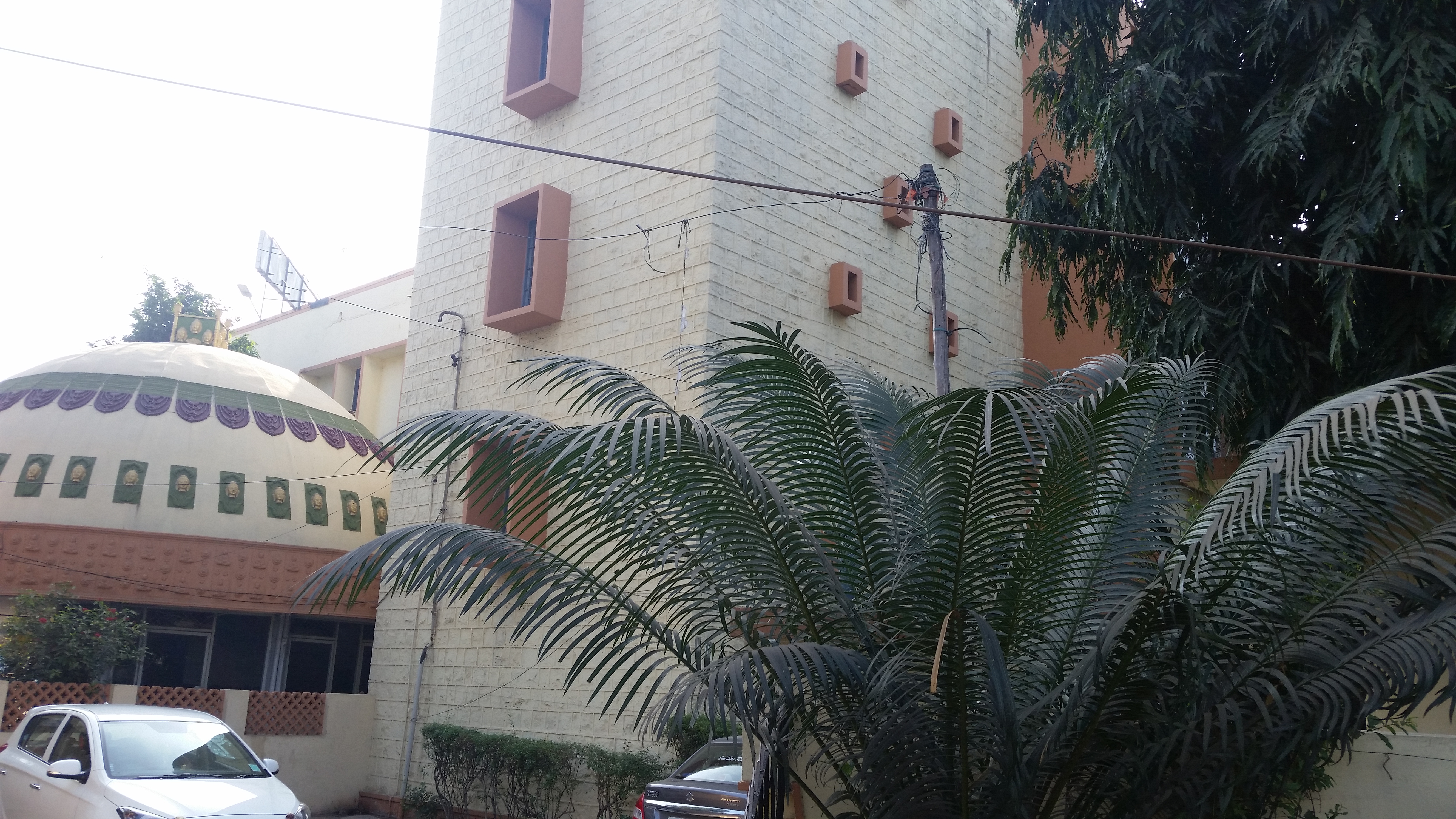|
Kondaveedu Fort
Kondaveedu Fort is a historically significant ancient hill fortress located in Kondaveedu, a village in the Chilakaluripet constituency of Palnadu district, Andhra Pradesh, India. The site is located 16 miles west of the city of Guntur. Apart from this main fort, there are two other forts (names not known) nearby. Efforts are in progress to classify Kondaveedu Fort as a UNESCO World Heritage Site. Kondaveedu Fort was constructed by Prolaya Vema Reddy. It was used as the capital by the Reddy dynasty between 1328 and 1482, shifting from their former capital at Addanki. It was taken by the Vijayanagara emperor Krishnadevaraya in 1516. The Golconda Sultans fought for the fort in 1531, 1536 and 1579, and Sultan Quli Qutb Shah finally captured it in 1579, renaming it ''Murtazanagar''. The fort came under the control of the French colonists in 1752 when it was extensively fortified. It passed on to the British East India Company who got control of the fort in 1788 but abandoned ... [...More Info...] [...Related Items...] OR: [Wikipedia] [Google] [Baidu] |
Andhra Pradesh
Andhra Pradesh (ISO 15919, ISO: , , AP) is a States and union territories of India, state on the East Coast of India, east coast of southern India. It is the List of states and union territories of India by area, seventh-largest state and the List of states and union territories of India by population, tenth-most populous in the country. Telugu language, Telugu is the most widely spoken language in the state, as well as its official language. Amaravati is the state capital, while the largest city is Visakhapatnam. Andhra Pradesh shares borders with Odisha to the northeast, Chhattisgarh to the north, Karnataka to the southwest, Tamil Nadu to the south, Telangana to northwest and the Bay of Bengal to the east. It has the Coastline of Andhra Pradesh, third-longest coastline in India at about . Archaeological evidence indicates that Andhra Pradesh has been continuously inhabited for over 247,000 years, from early archaic Hominini, hominins to Neolithic settlements. The earliest r ... [...More Info...] [...Related Items...] OR: [Wikipedia] [Google] [Baidu] |
Vijayanagara
Vijayanagara () is a city located in Vijayanagara district of Karnataka state in India.Vijayanagara Encyclopaedia Britannica Vijayanagara was the capital city of the historic Vijayanagara Empire. Located on the banks of the Tungabhadra River, it spread over a large area and included sites in the Vijayanagara district, the Ballari district, and others around these districts. A part of Vijayanagara ruins known as the Group of Monuments at Hampi has been designated as a UNESCO World Heritage Site. Hampi, an ancient human settlement mentioned in Hindu texts, houses pre-Vijayanagara temples and monuments. In the early 14th century, the dominant Kakatiya Dynasty, Kakatiyas, Yadavas of Devagiri, Seuna Yadavas, Hoysala Empire, Hoysalas, and the short-lived Kampili kingdom, who inhabite ... [...More Info...] [...Related Items...] OR: [Wikipedia] [Google] [Baidu] |
Custard Apple
Custard apple is a common name for several fruits and may refer to Annonaceae, the custard apple family, which includes the following species referred to as custard apples: *''Annona cherimola'', a tree and fruit also called cherimoya *''Annona muricata'', a tree and fruit also called guanábana or soursop *''Annona reticulata'', a tree and fruit also called custard apple, ox heart or bullock's heart *''Annona senegalensis'', a tree and fruit called wild custard-apple *''Annona squamosa'', a tree and fruit also called sugar apple or sweetsop *''Asimina triloba'', the "pawpaw", a deciduous tree, with a range from southern Ontario to Texas and Florida, that bears the largest edible fruit native to the United States or Canada. Custard apple may also refer to ''White sapote, Casimiroa edulis'', in the rue or citrus family, Rutaceae. References {{Plant common name ... [...More Info...] [...Related Items...] OR: [Wikipedia] [Google] [Baidu] |
Ghat
Ghat (), a term used in the Indian subcontinent, to refer to the series of steps leading down to a body of water or wharf, such as a bathing or cremation place along the banks of a river or pond, the Ghats in Varanasi, Dhobi Ghat or the Aapravasi Ghat.Sunithi L. Narayan, Revathy Nagaswami, 1992Discover sublime India: handbook for tourists Page 5.Ghat definition Cambridge dictionary. Etymology The origin of the English 'ghat' is , ' and is normally translated as ghaṭ, quay, landing or bathing place, as well as, steps by a river-side. The word 'ghat' has also been derived from Dravidian etymons such as Telugu ''kaṭṭa '' and ''gaṭṭu'' (dam and embankment) derived from ''kaṭṭu'' meaning "to ...[...More Info...] [...Related Items...] OR: [Wikipedia] [Google] [Baidu] |
Gundlakamma River
The Gundlakamma River is a seasonal waterway that flows through the east-central part of the state of Andhra Pradesh, India. It arises in the Nallamala Hills, an offshoot of the Eastern Ghats. Gundlakamma is the largest of all the rivers that originate from the Nallamalla Hills. Geography It arises in the Nallamala Hills, an offshoot of the Eastern Ghats. Its main headwaters lie some 6 kilometers from the village of Ardhaveedu, Prakasam district at an altitude of 425 m. above sea level. Numerous mountain streams join it as it descends down the thickly forested hills through a series of curves and tight bends. It follows a north-easterly direction and enters the plains near Cumbum, after flowing through a town named after it. The river then flows past the town of Markapur and towards the Coromandel Coast through Addanki town. It finally enters the Bay of Bengal, some 19 km east of Ongole after covering a distance of 225 km. Gundlakamma is the largest of all th ... [...More Info...] [...Related Items...] OR: [Wikipedia] [Google] [Baidu] |
Krishna River
The Krishna River in the Deccan Plateau, Deccan plateau is the third-longest in India, after the Ganga, Ganga and Godavari. It is also the fourth-largest in terms of water inflows and river basin area in India, after the Ganga, Indus and Godavari. The river, also called Krishnaveni, is long and its length in Maharashtra is 282 kilometres. It is a major source of irrigation in the Indian states of Maharashtra, Karnataka, Telangana and Andhra Pradesh. Course The Krishna River originates in the Western Ghats near Mahabaleshwar at an elevation of about , in the state of Maharashtra in central India. From Mahabaleshwar, it flows to the town of Wai and continues east until it empties into the Bay of Bengal. The Krishna River passes through the Indian states of Maharashtra, Karnataka, Andhra Pradesh, and Telangana. Over its length, it flows for in Maharashtra, in Karnataka and in Andhra Pradesh. Tributaries The Krishna River has 13 major tributaries. Its principal tributaries in ... [...More Info...] [...Related Items...] OR: [Wikipedia] [Google] [Baidu] |
Kondavidu Reddi Kingdom
The Reddi Kingdom or Kondavidu Reddi Kingdom existed from 1325 to 1448 CE in southern India. Most of the region that was ruled by the kingdom is now part of modern-day central Andhra and Rayalaseema. It was established by Prolaya Vema Reddi in 1325. Etymology The Telugu term "''Reddi''", whose earlier forms were "''Raddi''", "''Rattodi''", and "''Rattakudi''", linked to the Sanskrit term "''Rashtrakuta''", was used for village headmen, who were responsible for organising the cultivation of the agricultural lands of the villages and collecting taxes. From the seventh century, some of the members of the Rattakudi families had important posts in the administration of the kingdoms. A copperplate record mentioned the grandfather of the founder of the dynasty as a ''sainya-nayaka'', a commander of the forces. Origin The Reddi rulers played a prominent part in post-Kakatiyas. The Kakatiya empire came to an end in 1323 after the army of the Delhi sultanate invaded Warangal and captur ... [...More Info...] [...Related Items...] OR: [Wikipedia] [Google] [Baidu] |
Magazine (artillery)
A magazine is an item or place within which ammunition or other explosive material is stored. The word is taken originally from the Arabic word ''makhāzin'' (مخازن), meaning "storehouses", via Italian and Middle French. The term is also used for an ammunition dump, a place where large quantities of ammunition are stored for later distribution. This usage is less common. Field magazines In the early history of tube artillery drawn by horses (and later by mechanized vehicles), ammunition was carried in separate unarmored wagons or vehicles. These soft-skinned vehicles were extremely vulnerable to enemy fire and to explosions caused by a weapons malfunction. Therefore, as part of setting up an artillery battery, a designated place would be used to shelter the ready ammunition. In the case of batteries of towed artillery the temporary magazine would be placed, if possible, in a pit, or natural declivity, or surrounded by sandbags or earthworks. Circumstances might requ ... [...More Info...] [...Related Items...] OR: [Wikipedia] [Google] [Baidu] |
Guntur
Guntur (), natively spelt as Gunturu, is a city in the States and union territories of India, Indian state of Andhra Pradesh and the administrative headquarters of Guntur district. The city is part of the Andhra Pradesh Capital Region and is located on the Eastern Coastal Plains approximately south-west of the state capital Amaravati. According to data from the 2011 Census of India, Guntur had a population of 743,354 in that year, making it the List of cities in Andhra Pradesh by population, third-most-populous city in the state, and occupies of land. The city is the heartland of the state, located in the center of Andhra Pradesh and making it a central part connecting different regions. The city is home to numerous state government offices and agencies. being part of the district capital and being in close proximity to the state capital Amaravati. The city is about 1100 miles south of the national capital New Delhi. It is classified as a ''Y-grade'' city as per the Pay Commi ... [...More Info...] [...Related Items...] OR: [Wikipedia] [Google] [Baidu] |
East India Company
The East India Company (EIC) was an English, and later British, joint-stock company that was founded in 1600 and dissolved in 1874. It was formed to Indian Ocean trade, trade in the Indian Ocean region, initially with the East Indies (South Asia and Southeast Asia), and later with East Asia. The company gained Company rule in India, control of large parts of the Indian subcontinent and British Hong Kong, Hong Kong. At its peak, the company was the largest corporation in the world by various measures and had its own armed forces in the form of the company's three presidency armies, totalling about 260,000 soldiers, twice the size of the British Army at certain times. Originally Chartered company, chartered as the "Governor and Company of Merchants of London Trading into the East-Indies," the company rose to account for half of the world's trade during the mid-1700s and early 1800s, particularly in basic commodities including cotton, silk, indigo dye, sugar, salt, spices, Potass ... [...More Info...] [...Related Items...] OR: [Wikipedia] [Google] [Baidu] |
France
France, officially the French Republic, is a country located primarily in Western Europe. Overseas France, Its overseas regions and territories include French Guiana in South America, Saint Pierre and Miquelon in the Atlantic Ocean#North Atlantic, North Atlantic, the French West Indies, and List of islands of France, many islands in Oceania and the Indian Ocean, giving it Exclusive economic zone of France, one of the largest discontiguous exclusive economic zones in the world. Metropolitan France shares borders with Belgium and Luxembourg to the north; Germany to the northeast; Switzerland to the east; Italy and Monaco to the southeast; Andorra and Spain to the south; and a maritime border with the United Kingdom to the northwest. Its metropolitan area extends from the Rhine to the Atlantic Ocean and from the Mediterranean Sea to the English Channel and the North Sea. Its Regions of France, eighteen integral regions—five of which are overseas—span a combined area of and hav ... [...More Info...] [...Related Items...] OR: [Wikipedia] [Google] [Baidu] |
Quli Qutb Shah
Sultan Quli Qutb-ul-Mulk, more often though less correctly referred to in English as Quli Qutb Shah (1485 – 2 September 1543), was the founder of the Qutb Shahi dynasty, which ruled the Sultanate of Golconda in southern India from 1518 to 1687. Of Turkoman origin and born in Persia, he originally served the Bahmani sultan, and was awarded the title Qutb-ul-Mulk (Pillar of the Realm) as military chief; he eventually took control of Golconda. Background Originally named Sultan Quli, he was a Shi'i Turkoman from the city of Hamadan in Persia. He was the son of Uways Quli Beg, of the Qara Qoyunlu dynasty, and Maryam Khanum, a daughter of the Hamadan noble Malik Saleh. Through his father, he was descended from the Turkoman ruler Qara Yusuf twice over; his grandparents, Pir Quli Beg and Khadija Begum, were grandchildren of Qara Yusuf's sons Qara Iskander and Jahan Shah respectively. Sultan Quli had come to South India for the horse trade, and mentioned in SM Kamal's he i ... [...More Info...] [...Related Items...] OR: [Wikipedia] [Google] [Baidu] |








